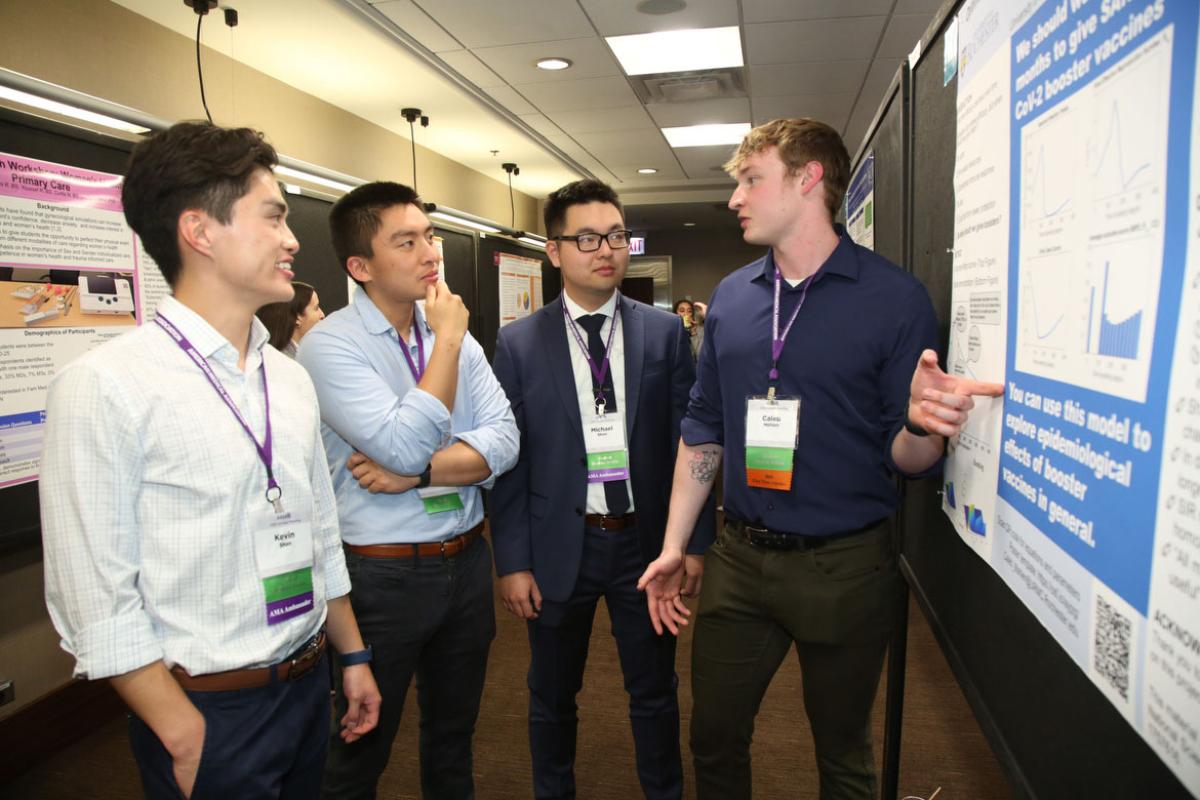If you’re preparing for the United States Medical Licensing Examination® (USMLE®) Step 1 exam, you might want to know which questions are most often missed by test-prep takers. Check out this example from Kaplan Medical, and read an expert explanation of the answer. Also check out all posts in this series.
An autosomal recessive disease has a carrier frequency of 1/25 in a specific population. Which of the following is the most likely frequency of individuals expressing the disease in this population?
A. 1/25.
B. 1/50.
C. 1/625.
D. 1/2,500.
E. 1/5,000.
The correct answer is D.
Kaplan Medical explains why
Subscribe and succeed in medical school
Get tips and insider advice from the AMA on succeeding in medical school—delivered to your inbox.
For an individual to express an autosomal recessive disease they would need to inherit one mutated allele from each parent, indicating that both their mother and father would be carriers for the disease. The probability that each parent is a carrier is 1/25. Each parent has a one in two chance of passing the defective allele to their child, such that there is a 1/50 probability that the child will inherit a defective allele from a carrier parent (1/2 x 1/25).
Since both parents have to transmit the mutant allele to the child, the overall probability of the child receiving a mutant allele from each parent is 1/2,500 (1/50 x 1/50). This is the carrier frequency for cystic fibrosis in the northern European population.
An alternative way to answer the question is to utilize the Hardy Weinberg equilibrium. The carrier frequency in the population for an autosomal recessive disorder is represented by 2pq, where p is the frequency of the wild-type allele (usually close to one), and q equals the frequency of the mutant allele. In this question 2pq equals 1/25, and if it is assumed that p is close to one, q would equal 1/50 (the frequency of the mutant allele). The term q2 represents the frequency of individuals with the disease, which in this case would be 1/50 times 1/50, or 1/2,500.
The Hardy-Weinberg Equation:
- p2 + 2pq + q2 = 1
- p = frequency of allele 1 (conventionally the most common, normal allele)
- q = frequency of allele 2 (conventionally a minor, disease-producing allele)
- p2 = frequency of genotype 1-1 (conventionally homozygous normal)
- 2pq = frequency of genotype 1-2 (conventionally heterozygous)
- q2 = frequency of genotype 2-2 (conventionally homozygous affected)
Why the other answers are wrong
Choice A: The probability 1/25 is the carrier frequency, not the disease frequency.




